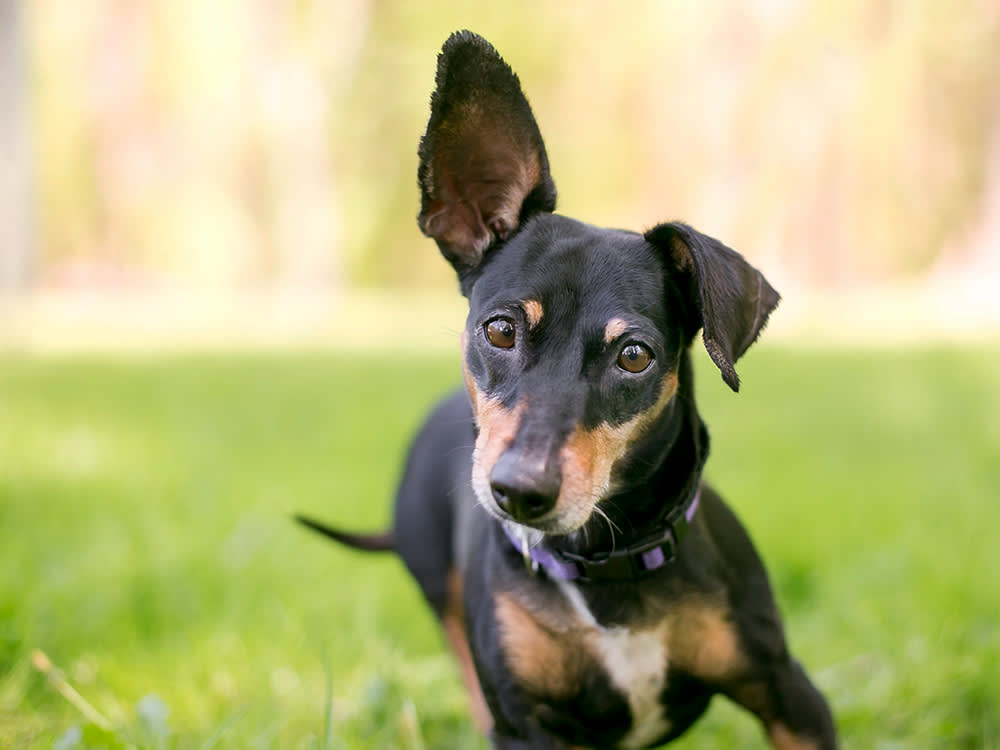All Ears: 10 Fun Facts About Your Dog’s Ears
There’s a lot more to your pup’s furry appendages than you’d think

share article
Floppy, folded, small, large – dogs’ ears come in many shapes and sizes. And for the most part, they all love a good scratch from you. But that’s far from all they’re good for. Do you know just how much better dogs’ hearing is than humans? Did you realise dogs use their ears to express emotions? Read on for more more fun facts about your dog’s ears.
1. They have more than a dozen muscles
Dogs have at least 18 muscles that work to tilt, raise and rotate their ears, which helps them identify and capture sounds from different directions.
2. They have a long, narrow ear canal
Unlike humans who have a very short ear canal, dogs have a long, narrow ear canal that makes an almost 90° bend as it travels to the deeper parts of the ear.
3. Dogs with floppy ears may have more ear problems
Compared to cats, dogs tend to have many more ear problems and ear infections – especially breeds with floppy ears, like Basset Hounds, and dogs with cropped ears.
4. Dogs can hear nearly four times better than humans
Your dog’s hearing ability is dependent on their breed and age, but generally, dogs and people both hear similar low-frequency sounds. The average hearing range for a dog is usually around 67 Hz to 45,000 Hzopens in a new tab (45 kHz). Human hearing stretches from 20 Hz to 20,000 Hz (or 20 kHz), but most adults actually top out at 16k Hz. They can also hear far-away sounds. How far can dogs hear? Dogs can hear sounds from over half a mile away, which is why they’re more sensitive to loud noises.
5. They have a higher hearing frequency than humans
Domestic dogs can hear significantly higher frequency sounds than humans, although not as high as cats. They also have a different acoustic perception of the world. Sounds that seem loud to people often have high-frequency tones that can scare dogs.
There are many sounds only dogs can hear. For example, ultrasonic dog whistles have been used in dog training because they produce sounds at frequencies higher than those audible to humans but well within the range of a dog’s hearing. Even during the quiet hours of the night, the world is a noisy place for dogs. Because of this super-hearing ability, other sounds only dogs can hear include the high-frequency pulse of the crystal resonator used in digital alarm clocks, bodily vibrations of termites in the walls, potential sounds before an earthquake and high pitch whirling of electronic devices like vacuums and screwdrivers, which are undetectable to human hearing.
6. They use their ears to express emotions
A dog’s level of attention can be determined by watching their ears. Erect ears facing forwards indicate that they’re engaged, and slightly pulled-back ears signal that they’re feeling friendly; ears laid tightly backopens in a new tab against the head suggest they’re feeling fearful or timid.
7. Their ears can move independently of one another
They can tilt, turn, raise and lower their ears one at a time.
8. A dog’s ear canal is L-shaped
Vertical towards the jaw, then taking an almost 90° turn horizontally towards the ear drum. This makes examination challenging and predisposes dogs to a variety of ear ailments, including parasites and yeast infections.
9. Bloodhounds have the longest ears
A Bloodhound named Tigger from Illinois, whose right and left ears measured 34.9 and 34.2cm respectively, holds the title for longest ears, according to the Guinness Book of World Records. That length has a purpose: to help direct scent to the Bloodhound’s sensitive sniffer.
10. Dogs can wear hearing aids
University of Cincinnati researcher Pete Scheifele, also the director of UC’s Bioacoustics and Canine Audiology Clinic, is developing a hearing aid that will help dogs with acquired hearing loss.

Claudia Kawczynska
Claudia Kawczynska was co-founder and editor-in-chief of The Bark for 20 years. She also edited the best-selling anthology Dog Is My Co-Pilot.


